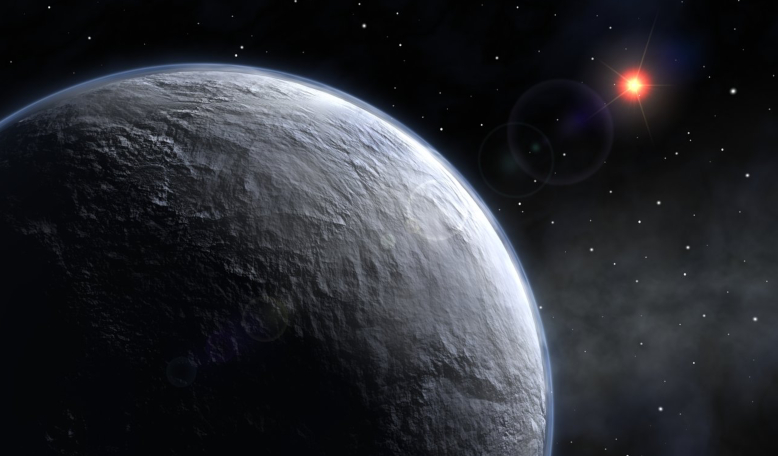A new study exploring the habitability of the early Earth, suggests that the gravitational push and pull from our Moon, which was much closer to us billions of years ago than it is now, helped keep our planet warm enough for liquid water to flow, a scenario which could have contributed to the establishment of life.
Pinning down when life first arose on Earth is very difficult. Our current best guess is that around 3.8 billion years ago, a common ancestor gave rise to two main groups of life; archaea, a group of single-celled prokaryotic organisms, and bacteria.
But even at this early stage, for life as we know it to flourish, it needs access to liquid water – even bacteria need it to survive.
This ‘simple’ requirement however does throw a spanner in the works when Earth’s early years are taken into consideration.
There is an astrophysical expectation that not long after the formation of the Earth, our young sun was only pumping out around 70 percent of the solar radiation it is now owing to a higher ratio of hydrogen to helium in its core.
If the sun’s output was so low, then it should have resulted in Earth freezing over and becoming a huge snowball say some scientists; a theory that is not unrealistic as evidence has been found in ancient rocks to back up at least two episodic freezing periods that occurred in rapid succession starting around 700 million years ago.
Consequently, a frozen Earth would mean that there would be no, or hardly any, liquid water on the planet’s surface. However geological records, such as oxygen isotope data from zircons, show that liquid water was present on the Earth’s surface as early as 4.4 billion years ago.
This apparent contradiction between observations of liquid water early in Earth’s history and a low output of the Sun is known as the faint Sun paradox or faint Sun problem.
This issue was raised by astronomers Carl Sagan and George Mullen in 1972. Since then many different hypotheses as to how Earth kept warm enough for life to evolve in these early stages have been suggested.
These include an initially more massive Sun, an enhancement of greenhouse gases or a different cloud distribution which affected global albedo; albedo is the proportion of radiation that is reflected by a surface, typically that of a planet or moon. If, for example, the Earth was a giant snowball it would reflect most of the incoming light from the Sun back out into space, causing the planet to keep cold.
While a combination of these theories could have helped keep Earth warm enough for some liquid water to remain, a new study headed by Rene Heller at the Max Planck Institute for Solar System Research in Germany, thinks we have overlooked the contribution of another potentially significant factor - the Moon.
When our moon formed, it was around four Earth radii away from our planet. Nowadays, the Moon is over 60 Earth radii away. Even at its current proximity to Earth, the Moon still has an affect on our planet. High tides and low tides around the world for example are caused by the gravitational pull of the moon.
As Earth rotates, the moon's gravity pulls on different parts of our planet, causing it to deform, which in turn generates something called a tidal force that heats our planet.
The same process is what makes Jupiter’s moon Io, the most volcanically active body in the Solar System and might be the reason behind why jets of water spew out from the surface of Enceladus into space.
A much closer moon would have meant that the tidal force exerted on Earth was greater; enough to cause a temperature increase of several degrees celsius over a 100 million year period, say Heller and colleagues. The team’s results are based on atmospheric models coupled with a model for the evolution of the Earth’s tidal heating rate and assuming that a Moon-forming impact occurred 69 million years after the formation of the Sun.
Although this heating alone does not solve the faint-young-Sun paradox, the authors write in their research paper, we demonstrate that tidal heating factored significantly into the heat budget of early Earth.
It could have played an important role in maintaining liquid water at Earth’s surface, and likely contributed to the prevention of a global snowball state, Heller and colleagues say.
Further more, “this heat could have supported the early habitability of our planet”, says Heller in a Tweet.
The team’s research, “Habitability of the early Earth: Liquid water under a faint young Sun facilitated by strong tidal heating due to a nearby Moon”, can be found here.











